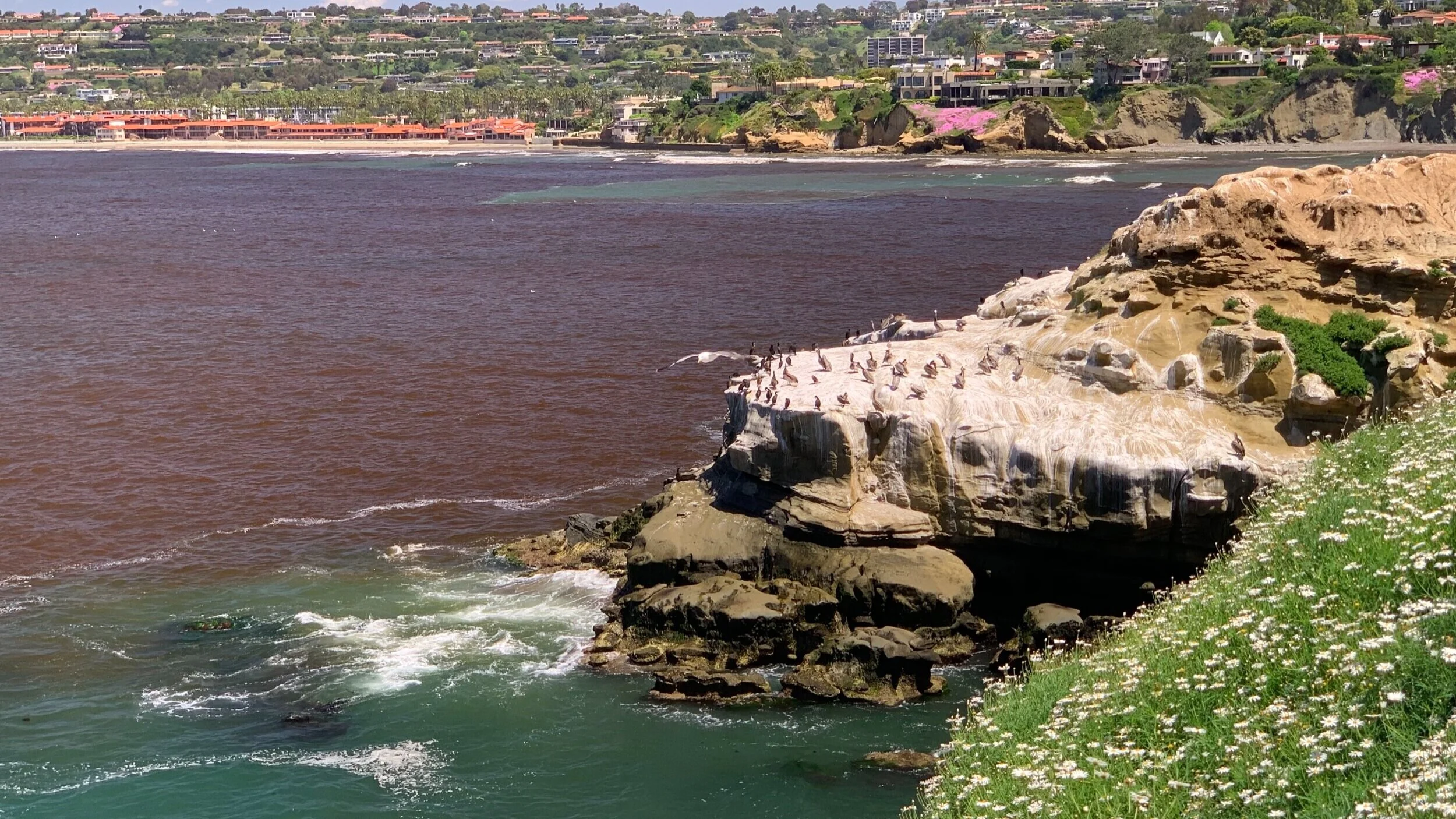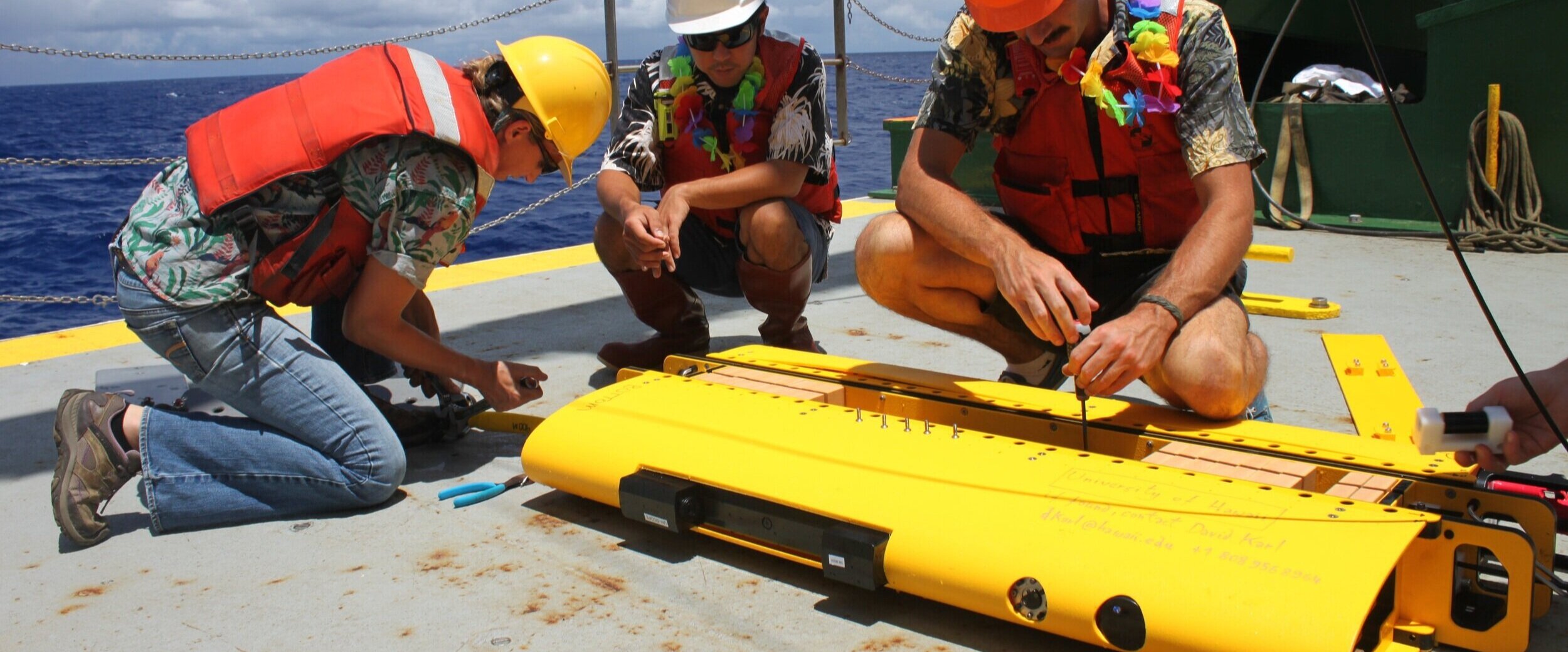AQUACULTURE
AQUACULTURE
PAYLOAD:
RBRmaestro CTD
JFE RINKO III Dissolved Oxygen Sensor
Seabird C-Star Transmissometer
Seabird OCR-504 Radiance
Seabird ECOpuck: ChlA, CDOM, Backscatter
INSTITUTION:
SIO, South African Fisheries Research and Development, & University of Cape Town
DEPLOYMENT LOCATION:
Western South Africa
SCIENTIFIC SUMMARY:
The rapid profiling capabilities of the Wirewalker have many benefits for ocean-based Aquaculture, such as salmon farming. Profiling, or moving a sensor up/down through the water column, has many advantages to measuring at discrete depths. Rather than having to disburse many sensors in the water column, a single sensor suite can be utilized to measure the entire water column; and with much better vertical resolution. Since the Wirewalker is fully autonomous, the profiling action requires no human involvement, reducing farm tech labor and eliminating data entry errors. It also allows for continuous water column monitoring; even at night and in adverse weather. Ultimately, the Wirewalker becomes a cost saving tool for both,
New site exploration/assessments, and
Long-term monitoring near existing pens
For example, a SITE EXPLORATION Wirewalker could be well outfitted with several parameters to adequately characterize the environment and understand the natural variability at the site before installing pens. In this case, a sensor suite may include sensors for salinity, temperature, depth, dissolved oxygen, chlorophyll, turbidity, and perhaps also a nutrient sensor and PAR (for light). This characterization will help to determine if the site is ideal for the species to cultivate. Additionally, an ADCP to measure current velocity and/or a wave sensor could be added, providing vital information for the design and construction of the pens.
For MONITORING, a simpler solution designed to measure critical parameters for maintaining a healthy stock (such as salinity, temperature, and dissolved oxygen), is likely sufficient. Moored near existing pens, this solution provides constant, high-resolution monitoring of the water column which can easily be accessed in real-time, fed into forecasting software, and used for early warning of potentially harmful events such as algae blooms and hypoxic upwelling, etc. This detailed view of the complete water column is critical in driving efficient operational decisions.
Figure 1
Figure 1 shows an example in which a Wirewalker-focused study helped to characterize and determine the mechanism of Harmful Algae Blooms (HABs) off the west coast of South Africa. A region in which upwelling-favorable winds lead to high primary productivity and high phytoplankton biomass. The area is also susceptible to intense HABs characterized by either toxicity or biomass degradation-related anoxia, both of which can have a significant deleterious effect on the local coastal ecosystem, fisheries, and human health.
In this case, the physical and biological dynamics are strongly forced by the near resonance between the diurnal wind field and the local inertial frequency. These results demonstrate that the time variability of the vertical distribution of temperature and Chl-A fluorescence (second and third panels from the top) is driven by the diurnal–inertial circularly polarized currents (fourth and fifth panels from the top) over the continental shelf during upwelling favorable winds (top panel: represented as pseudo-wind stress with variability at periods shorter than 8-hours removed). The energetic diurnal–inertial currents drove significant changes in the vertical distribution and temporal variability of temperature and Chl-A.
REFERENCE:
Lucas, A. J., G. C. Pitcher, T. A. Probyn, and R. M. Kudela (2014), The influence of diurnal winds on phytoplankton dynamics in a coastal upwelling system off southwestern Africa, Deep-Sea Res., Part II, 101, 50–62, doi:10.1016/j.dsr2.2013.01.016.












